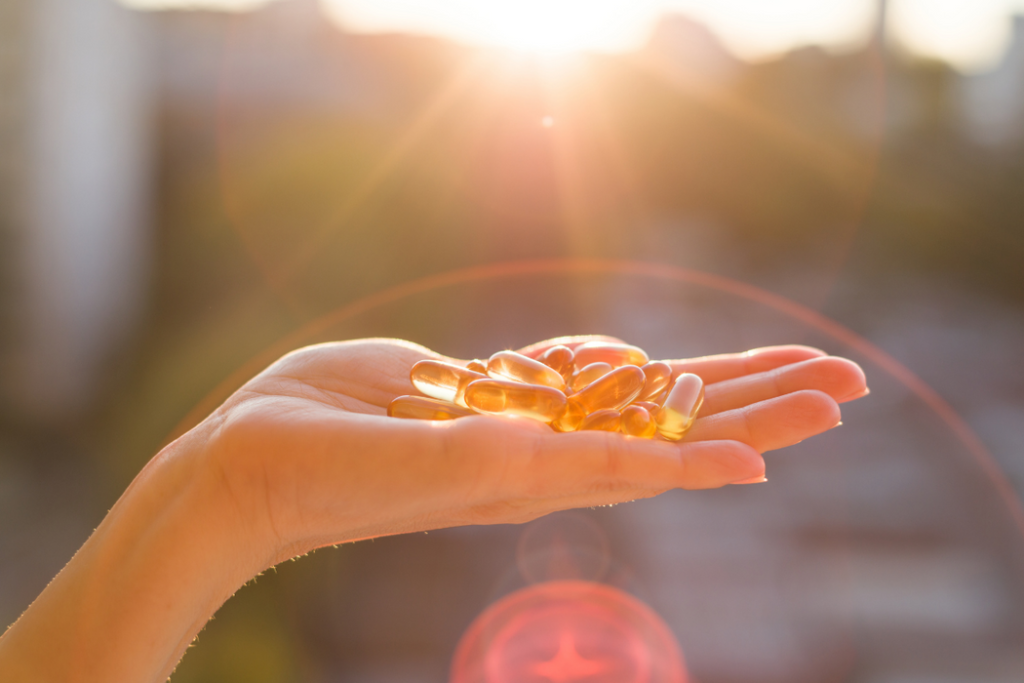
Ladies, it’s time to talk about the three big Os. No, not those Os (although those are important too, wink wink). I’m talking about omega-3s, omega-6s, and omega-9s. As a health coach and self proclaimed semi-kickass athlete over 40, I’ve learned the hard way that these fatty acids are essential for us to perform at our best. And let’s face it, we’re not getting any younger. So, let’s take a deep dive into the world of omegas and how they can help us optimize our training and kick butt at any age.
Omega-3 Fatty Acids: The Key to Recovery
As an athlete, you know that recovery is just as important as training itself. And let’s be real, the older we get, the longer it takes for our bodies to bounce back. That’s where omega-3 fatty acids come in. These essential fatty acids are known for their anti-inflammatory properties, which can help reduce post-exercise soreness and inflammation.
But that’s not all omega-3s can do for us. Research has also shown that omega-3s can improve lung function, increase endurance, and reduce muscle damage. And for us ladies over 40, omega-3s have been shown to improve bone health and reduce the risk of osteoporosis.
So, how much omega-3 do you need? The American Heart Association recommends at least two servings of fatty fish per week, such as salmon, mackerel, or sardines. But if you’re not a fan of fish or can’t get enough through your diet, a supplement may be necessary.
Look for a supplement that contains both EPA and DHA, the two types of omega-3s that have been shown to have the most health benefits. And if you’re an athlete, consider taking a higher dose of omega-3s on race weekends or after particularly tough workouts to help speed up recovery. I do this pre OR post ultra marathons and I do feel it helps with reducing soreness and shortening recovery time. I emphasize choosing pre OR post as consuming excessive amounts of omega-3s can lead to thinning of the blood and increased risk of bleeding. Cautiously, give yourself gentle extra Omega-3 support race or competition weekends, and be careful to not over do it.
Consult with a doctor if you’re concerned about consuming the correct dosage for you and your activity levels.
Omega-6 Fatty Acids: The Double-Edged Sword
Omega-6 fatty acids are found in a variety of foods, such as vegetable oils, nuts, and seeds. And while they’re essential for our health, too much of a good thing can be a bad thing. In fact, the typical Western diet contains too many omega-6s and not enough omega-3s, leading to an imbalance that can contribute to inflammation and chronic disease.
That’s not to say you should avoid omega-6s altogether. While omega-6s have gotten a bad rap in recent years due to their potential to contribute to inflammation, they are still an important part of our diet and can play a role in optimizing our performance and recovery as athletes.
Research has shown that supplementing with omega-6s can help reduce muscle soreness and fatigue, and improve recovery times. This is likely due to their ability to promote the growth of new muscle tissue and aid in the repair of damaged muscle fibers.
It’s all about balance. Aim for a ratio of 4:1 (omega-6s to omega-3s), and avoid processed and fried foods that are high in omega-6s and low in omega-3s.
Omega-9 Fatty Acids: The Underdog
Omega-9 fatty acids are often overlooked in favor of omega-3s and omega-6s. But don’t let their lack of popularity fool you – they still pack a punch. Omega-9s are found in foods such as olive oil, avocados, and nuts, and have been shown to improve heart health, reduce inflammation, and lower cholesterol levels.
While omega-9s are not technically essential (meaning our bodies can produce them on their own), they can still provide health benefits when included in our diet. So, don’t be afraid to add a little extra olive oil to your salad or snack on some nuts for an omega-9 boost.

Supplements:
While it’s always best to get your nutrients from whole foods, supplements can be a convenient way to ensure you’re getting enough of a particular nutrient, especially if you have dietary restrictions or preferences. If you’re looking for a high-quality omega-3 supplement, I highly recommend Coromega’s Coconut Bliss, which I personally use and love. It tastes so good and it’s super easy for travel. It’s important to choose a supplement that has been third-party tested for purity and potency, and that contains a high concentration of EPA and DHA, the two types of omega-3s that are most beneficial for our health.

Now that you know the importance of omega-3s, omega-6s, and omega-9s for women over 40 and women athletes, it’s time to take action and prioritize these essential fatty acids in your diet. By including fatty fish, nuts, seeds, and healthy oils in your meals, you can ensure you’re getting the right balance of omega-3s and 6s. And while omega-9s are non-essential, they still offer health benefits that are worth including in your diet.
Remember, taking care of your body is an ongoing journey, and every small step you take towards better health is a step in the right direction. So make sure you’re getting enough omega-3s, omega-6s, and omega-9s, and don’t forget to take care of your body in other ways too, such as regular exercise, stress management, and getting enough sleep. Your body will thank you for it!
And don’t forget, if you’re looking for a high-quality omega-3 supplement, be sure to check out Coromega’s Coconut Bliss. It’s a great way to ensure you’re getting enough of this vital nutrient and taking care of your body from the inside out.